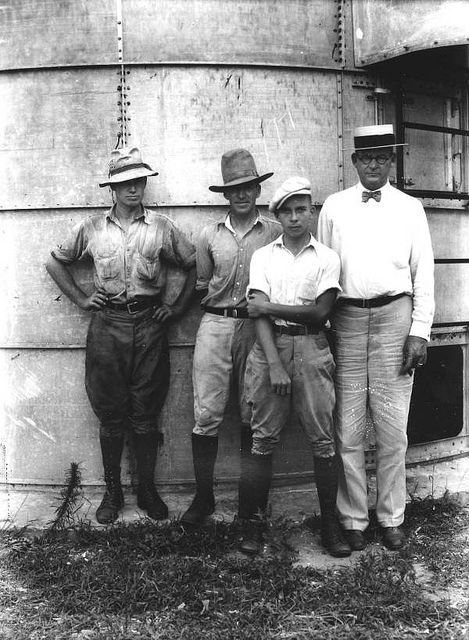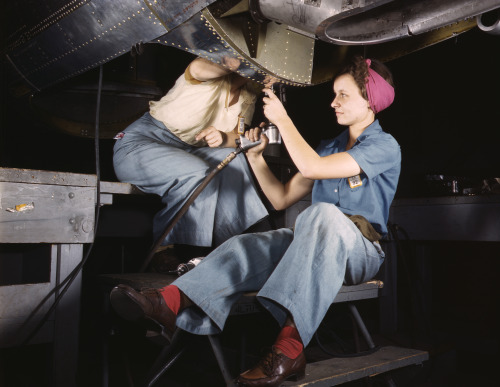ephemeral-elegance:Time for FRIDAY FASHION FACT! Today we are talking about what is likely the singl
ephemeral-elegance:Time for FRIDAY FASHION FACT! Today we are talking about what is likely the single most popular piece of clothing of our time- jeans! I can almost guarantee that everyone reading this owns a pair. Most of you are probably even wearing them now. Jeans span class, gender, age, and culture. So where did they come from, and how did they grow to be so prevalent?The origins of jeans dates back centuries. In the 17th century, textile workers in Genoa, Italy were well known for producing a sturdy cotton fabric, though it may have originally been created much earlier. This fabric was ideal for laborers or artisans who required durable, yet affordable, clothing. Soon, textile workers in Nimes, France attempted to recreate this fabric (sidenote- the French word for Genoa is “Gênes,” likely source of the word “jean.”) The result was an even tougher fabric, ideal for aprons, and other such outer-workwear. The fabric from Nimes, or fabric “de Nimes” (denim!) spread across the globe thanks to sailors who used the durable material to cover their cargo, protecting it from the elements.Throughout the 17th, 18th and 19th centuries, laborers in Northern Italy, Southern France, and beyond did wear trousers constructed out of jean cotton, and possibly even denim. Even at this time, they were blue. Why? It all comes down to chemistry. Just like all cotton, jean and denim are naturally white. Since these fabrics were used for work wear, though, it was only logical to dye them a dark color to hide the dirt and stains. Without getting deep into the science of it, before artificial dyes were created, indigo was one of the most steadfast natural dyes, with a strong, rich color. Additionally, while most dyes permeate the fibers, indigo clings to the surface. When it is washed, bits of the fiber are stripped away along with the dye. While this may sound like a bad thing, that is what causes jeans to soften and become more comfortable the more you wash them. Finally, it was a very affordable dye, despite the fact that it was imported from India.Many people believe Levi Strauss created the first pair of denim jean pants as we know them today. However, he did not create them alone, or really at all. Strauss owned a prominent dry goods store in San Francisco, where, among other things, he sold fabrics. One of his frequent customers was the tailor Jacob Davis. Davis was asked by a customer to create a pair of extra-durable trousers for her woodcutter husband. Davis used heavy cotton fabric known as duck, and came up with the idea of reinforcing the weak points with copper rivets. It was extremely effective, and the design was an instant success among railroad workers. He made many pairs out of both duck and denim, determining that, due to the way blue denim softens and conforms to the wearer with washing, it was the more desirable fabric. However, he could not keep up with demand. Davis approached Strauss to collaborate with him on his successful venture, as Strauss could provide financial backing. Strauss agreed, and in 1873 the two men obtained a patent for “improvements in fastening pocket openings” aka riveted trousers. They were a huge success. Strauss opened a large tailor shop, followed by a factory, to produce the trousers, among a few other items. Davis ran the shop. It was also Davis who decided to add the bold orange double line stitching, created as a way for his product to stand out from competitors.So then how did denim jean pants, a workman’s pants, become so popular- even high fashion? The simple answer: Hollywood. First, around World War I, silent film actor William Hart starred as a jeans-wearing cowboy in an incredibly successful string of westerns. He spurred many men to buy the rugged style, though they were still seen as work-wear. John Wayne followed suit when he starred in the 1939 smash hit Stagecoach. During World War II, it became more common for women to wear jeans as many women took up factory jobs. Jeans solidified a place in the fashion world, though, in 1955 when James Dean wore a pair of blue jeans in Rebel Without A Cause. His style in that film was instantly iconic, though for some time the association with the film caused jeans to be associated with delinquent behavior. Despite that fact, it inspired designers to begin creating jeans purely for fashion, and within about 15 years, they were a common and acceptable style. The rest is history!Want to learn more about the history of jeans? Check out these books:Denim: From Cowboys to Catwalks: A History of the World’s Most Legendary Fabric, by Graham MarshDenim: An American Story, by David LittleHave a question about fashion history that you want answered in the next FRIDAY FASHION FACT? Just click the ASK button at the top of the page! -- source link
#fascinating#history#clothing#jeans#denim









